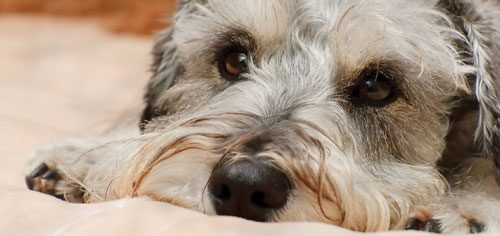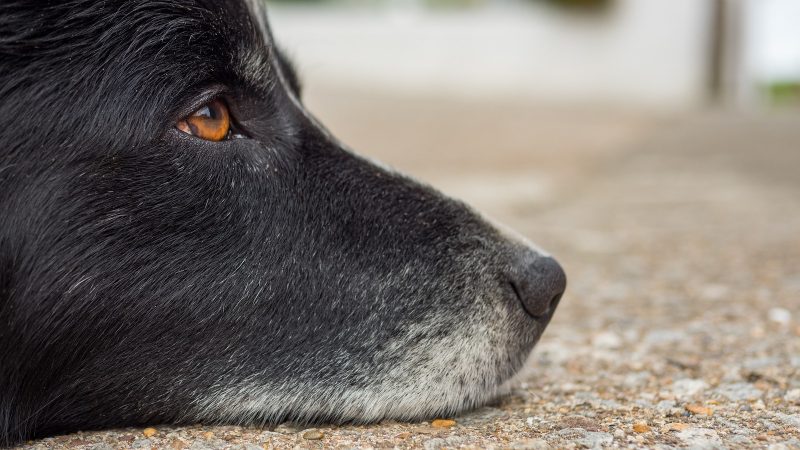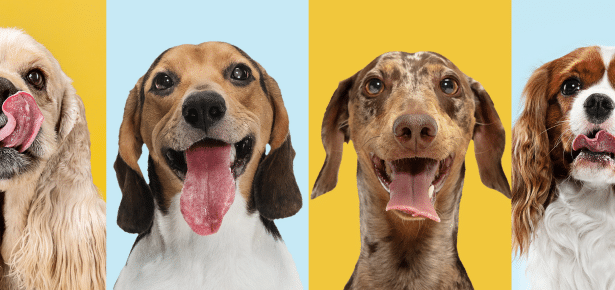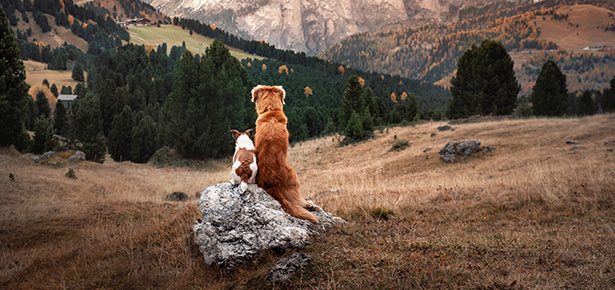

Jealousy
Dogs and the Green-Eyed Monster
I was just outside of Dawson City talking with a dogsled racer named Peter. He was getting ready to harness his dogs and they were milling around in a friendly, excited manner. I reached over to pet a handsome, blue-eyed Siberian Husky, but stopped when Peter warned me “If you pet one, you have to pet them all. They get really jealous. If they think that one of them is getting more of anything, affection, food, or whatever, they turn into green-eyed monsters.”
Jealousy and envy are common emotions in social settings. You might say it’s the art of counting the other person’s blessings instead of your own. In all social situations, there are inequities and some individuals come out better than others when it comes to rewards.
Scientists tend to separate emotions into two categories: primary and secondary. Primary emotions, such as fear, anger, disgust, joy, and surprise, are considered to be universal. Secondary emotions—guilt, shame, jealousy, and envy—are thought to require more complex cognitive processes. For example, in the case of envy, you have to actively pay attention to what the other individual is getting and compare it to what you are getting for your efforts. Although jealousy and envy appear among primates such as chimpanzees and baboons, the argument has been made that these secondary emotions are unlikely to occur in an animal like the dog, because they involve self-awareness at a level which experts did not believe dogs possess. However, people who live around dogs and interact with them, such as Peter, often observe it in their pets.
One commonly observed manifestation of jealousy in dogs revolves around the complex relationship between a mother dog, her puppies, and her owner. Unlike humans, a canine mother does not maintain the maternal instinct for her offspring for the remainder of her life. As soon as the puppies are able to survive on their own, her maternal instinct for the current litter wanes and is certainly lost by the time she next goes into heat. Young puppies are, of course, very cute and cuddly, so it is natural for them to receive a lot of affection from the people in the house. More knowledgeable owners may try to treat all of the dogs with
equal care and attention, but usually this is to no avail. The mother dog sees her owner’s attention being diverted away from her and toward the puppies, and becomes jealous. She may begin ignoring the pups and trying to exclude them from the maternal nest. This can escalate to the point where she might actually become aggressive toward the pups or even toward her owner.
I don’t know why behavioural scientists tend to ignore such common observations. It is well accepted that dogs have a broad range of emotions. Dogs are certainly social animals, and jealousy and envy are triggered by social interactions. Dogs also have the same hormone, oxytocin, which has been shown to be involved in both expressions of love and jealousy in experiments involving humans. With this in mind Friederike Range of the University of Vienna decided to experimentally test if dogs showed jealousy and envy.
Range set up a situation in which two dogs performed the same task, but one was rewarded and the other was not. The dogs involved were pet dogs, and these had all learned the simple trick of shaking hands. Thus, at the command “Shake hands,” the dog extended its paw and put it in a person’s hand. For the test, the dogs were arranged in pairs, seated beside one another. Both dogs in each pair were individually asked to “shake hands,” but only one dog received a reward, either a bit of bread or some sausage.
In this set-up, one might expect that if dogs do experience jealousy or envy, they might respond to this unfair distribution of rewards by refusing to continue to obey the command. That is exactly what happened. The dog that was not being rewarded soon stopped doing the task. Furthermore, the dog that was not rewarded showed clear signs of stress or annoyance when its partner got the treat.
Some people might protest that this does not really show jealousy. After all, many people claim that dogs are extremely tolerant and do not evaluate the world on the basis of winners and losers. According to them, the behaviour of the dog who is not rewarded should eventually disappear due to the process that learning theorists call extinction, which simply means that rewarded behaviours become stronger and more frequent while unrewarded behaviors disappear or are extinguished. To make sure that the experiment was really showing that it was the interaction between the dogs that was important, rather than just the frustration of not being rewarded, a similar experiment was conducted where the dogs performed the task without a partner but also without any rewards for his exertions. Under these circumstances, the unrewarded dog continued to present its paw for a much longer time, and did not show the same signs of frustration and annoyance.
Jealousy and envy in dogs is not quite as complex as it is in human beings, however. When human beings are involved in competitive social situations, every aspect of the reward is carefully scrutinized to try to determine who is getting the most and the best outcome. Dogs do not view this situation under the same kind of microscope. This can be seen when the experimenters changed the situation in a subtle way.
Now, again, we have two dogs sitting side by side with each being asked in turn to “shake hands.” Both dogs are rewarded for this activity, however, one dog is getting a very desirable treat, a piece of sausage, while the other dog is getting a less desirable treat, a piece of bread. In human beings, this might be the equivalent of two workers in a corporation who both worked equally well and who both received promotions. However, one was rewarded with a new posh corner office, while the other got a smaller, more austere one down the hall. Both worked and were rewarded, but one got the bigger prize, so it is reasonable to expect that the less favoured individual might feel jealous and envious.
In the dogs’ case, however, both continued to work and seemed to be quite happy with the situation. Thus, the dogs evaluated the simple receipt of the reward for work done, not the nature of the reward. Getting or not getting a reward for efforts expended is a matter
of fairness. Receiving the same reward for the same effort is a matter of equity. Dogs clearly respond to what they consider to be fair or unfair, but have not yet developed a sense of equity. Because of this, it is clear that the jealousy that we see in dogs is of a simpler nature.
Discovering that dogs have jealousy and envy as humans do makes it clear that they are closer to us emotionally then we may have thought before. They share not only our more positive emotional responses, such as joy, love, and loyalty, but also delve into the darker side of emotions as well.
Dr. Range finds something very positive about these results, saying, “This kind of behaviour, namely reacting to others receiving rewards, may represent an earlier stage in the evolution of the kinds of cooperative behaviours that we see in humans and other primates.”
Meanwhile, until our canine friends develop those higher cooperative behaviours, remember that they are keeping a keen eye on who gets their just rewards and who doesn’t. So, if you are living with or interacting with more than one dog, you might want to make sure that each of them gets a pat and a treat at the same time, just to keep them from turning into green-eyed monsters.
Join the newsletter and never miss out on dog content again!
"*" indicates required fields
By clicking the arrow, you agree to our web Terms of Use and Privacy & Cookie Policy. Easy unsubscribe links are provided in every email.





